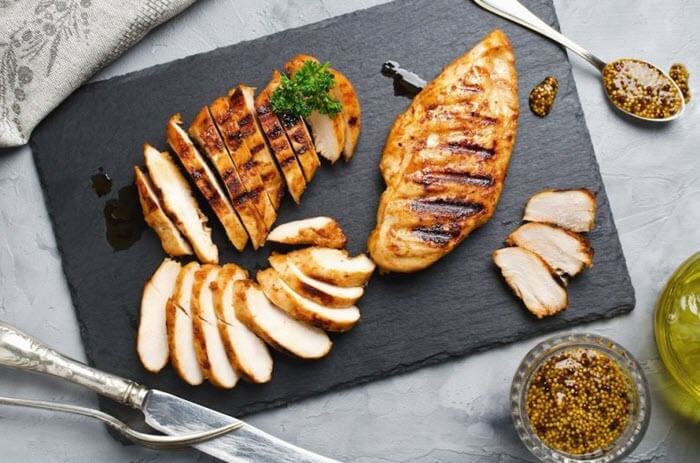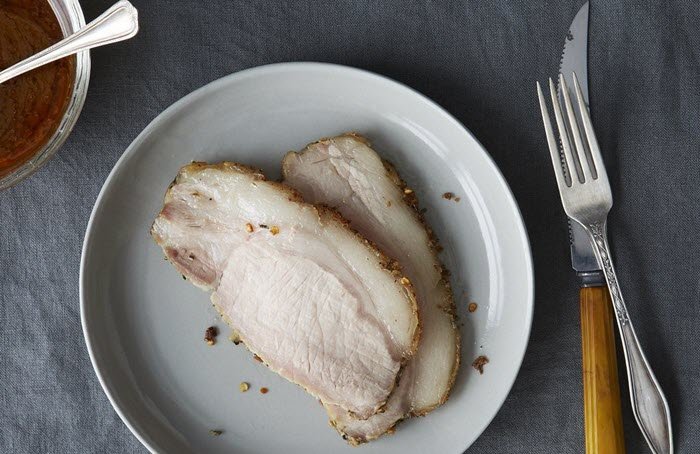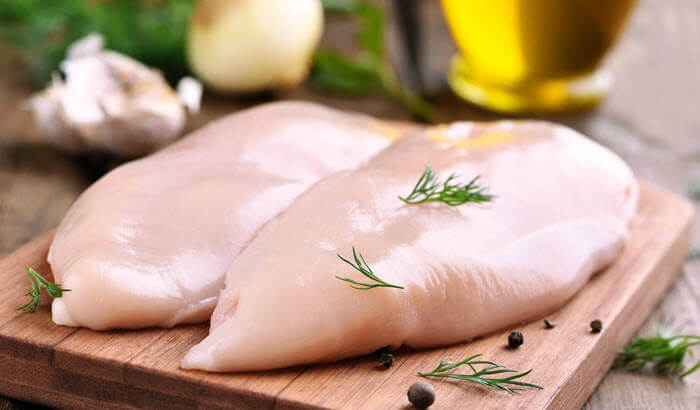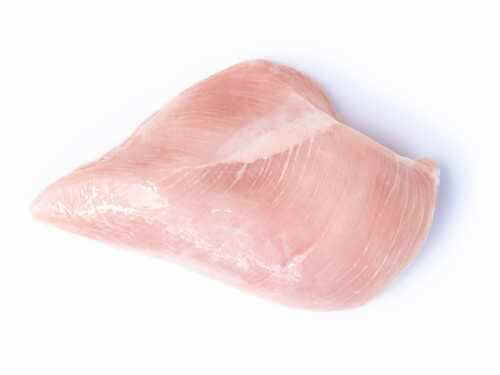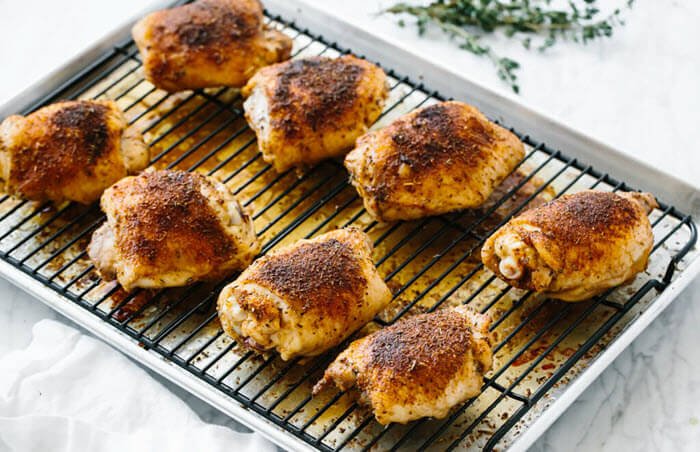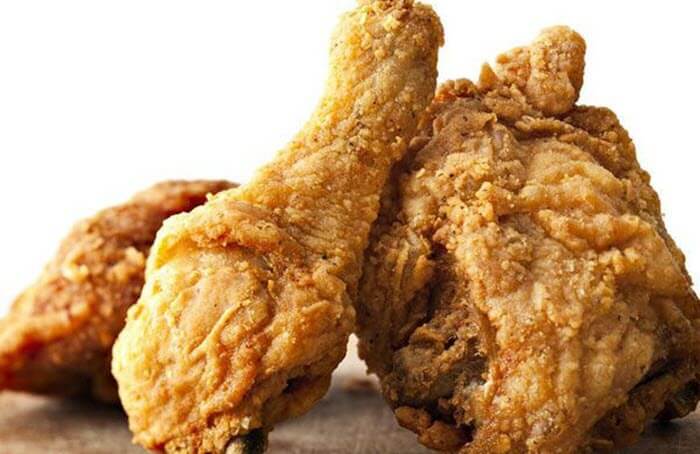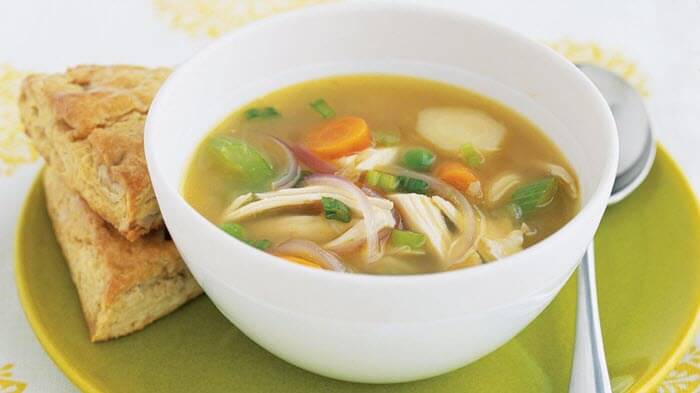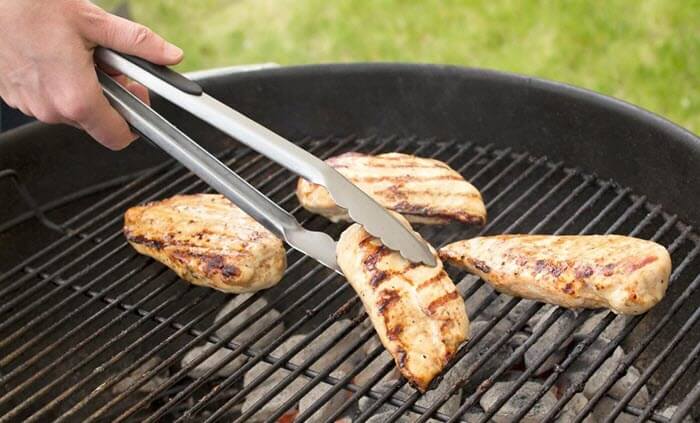Experiencing rubbery chicken can be frustrating, but there are ways to prevent it in the future. If you’re tired of this issue, we have some tips to help you avoid rubbery chicken in your future cooking endeavors.
It’s common for chicken to look perfect during the cooking process but turn out less than desirable when finished. By understanding the causes and implementing the right techniques, you can ensure your chicken comes out tender and juicy every time.
Table Of Contents
Things About Chicken Rubbery You Should Know
Rubbery chicken can occur for various reasons, and it might happen unexpectedly.
Two possibilities could be the chicken was already rubbery when you brought it home or it became rubbery in the aftermath.
Either way, there are some very easy solutions to avoid this happening in the future while other reasons for a rubbery outcome are something you cannot control. The good news, in most cases you can prevent this from happening.
PLEASE NOTE
There are people who believe you should beat and squeeze the larger chicken parts until they seem to be the same size as the other parts.
In all honesty, this is not going to help and is not a good idea. The density of meat is not going to alter no matter how hard you pound it and the cooking time is not going to alter anything either.
Pounding the chicken to get the meat softer for the right consistency for various dishes is a good approach for tenderizing but it will not alter the cooking time.
You spent a good deal of time preparing your chicken meal only to end up hitting the service line at your local takeout store to replace what took you hours to prepare.
Read on and discover what causes rubbery chicken and what you can do to prevent it from happening again
Why Is My Chicken Rubbery But Not Dry?
1Overcooking
Overcooking is probably the biggest problem for ending up with rubbery chicken.
Whether baking or frying, overcooking will make chicken difficult to chew because the protein fibers in the meat will lose moisture and elasticity from over-exposure to extended high heat for long periods of time.
2Under-Cooked Chicken
Not only is the under-cooked chicken rubbery in texture, but can be a health risk. Keep in mind, all parts of the chicken must have an internal temperature of 165°F to guarantee it’s fully cooked.
To ensure your chicken is fully cooked try one of these solutions:
Use a meat thermometer to guarantee the chicken meat is at least 165°F in the deepest areas. Continue cooking until this temperature is met throughout the entire chicken.
Check the meat at the bone area in the deepest section of the chicken breast and thigh. Make sure there are no signs of blood or any uncooked meat near the bone.
3Not Enough Moisture
In many cases, not having enough moisture in the chicken means it’s overcooked but in other cases, the chicken showed up at your door already rubbery. Because chicken is lean poultry, it can cause the meat to become dry.
Moisture can be depleted from the meat at any given time and there is not much you can do.
Preventing chicken from losing too much moisture before cooking:
Cover the chicken with foil or plastic wrap until you are ready to start cooking.
Before cooking, soak the chicken in water that has been heavily salted. Soaking in saltwater helps to break down some of the chicken muscle fiber to make it tender. The salt brine will absorb into the chicken meat to prevent dryness. It might help to marinate it in one of the many marinading products that are available.
Take a pan and partially fill with water, wine, broth, or any preferred liquid of choice. Add some butter then the chicken. Heat the contents using a medium cooking temperature until the chicken is heated throughout. Do not heat longer than 10 minutes after the liquid reaches medium temperature.
NOTE:
When shopping for poultry, ask about the farming conditions in which the animal was raised. Chicken that is well fed and well managed is more likely to have a better meat quality and better flavor.
4Woody Chicken Breasts
Okay, you have followed all the directions and recommendations and still have chicken with a rubbery texture. You cooked it properly and even included brining, to no avail.
Bottom line, you might just have a chicken with woody breasts. That means the meat is too tight and in some cases, knotted in texture.
There have been many discussions about what causes the woody chicken breasts.
Some believe this is a genetic problem while others believe it’s a more prevalent issue with organically grown chickens. Other chicken parts do not seem to be prone to this particular condition.
This condition is not harmful to your health but it’s rubbery and not great for eating. Woody chicken breasts affect approximately 5 to 10 percent of chickens in the United States. Sometimes, these chickens are sold in grocery stores.
How you can avoid purchasing woody chicken breasts?
When shopping for chicken, you should feel the breast area for any unusual hardness. Often you can sense the difference between this condition and frozen chicken. A woody chicken breast feels harder and might even feel lumpy.
5White Striping Breasts
This is a condition on the chicken breast that looks like a wood grain that goes in the same direction as the muscle tissue.
This does affect the meat quality. White striping reduces nutritional value and taste. It can cause chicken rubbery.
The cause of white striping is not clear though it is believed the growers’ efforts to produce more chicken has led to some chickens with increased and excessive muscle density.
To avoid purchasing chicken with white striping,
Examine the skinless chicken breast at the store before buying it.
Ask the grocer about the farming conditions where the chicken was raised. Better conditions usually lead to higher chicken meat quality, nutritional value, meat texture, and taste.
Tips to Avoid Rubbery Chicken
Here are some tips for ensuring you have set the right cooking time for whatever size of chicken portions you are cooking.
Avoid Rubbery Chicken When Baking
Keep in mind, under-cooked chicken meat contains harmful microbes.
he internal temperature of the meat must reach 165° F to be sure that any potential health risks from organisms have been totally eliminated from cooking.
When you cook the chicken at the right temperature for the right amount of time, you will have tender and moist meat. If the temperature is too high, the moisture in the chicken will be drained out during the cooking process resulting in rubbery chicken. There is no true way to determine if the chicken is fully cooked inside just by looking at the skin.
So, how to tell if baked chicken is done?
The best way is to use a meat thermometer to monitor a deep center area for a good readout of the internal temperature. Once the chicken center reaches 165° F, then it is fully cooked You can use the USDA Chart [1] for the right and safest temperatures for various meats including chicken.
Another options is to cut into one or more areas around the bone in a deep center part of the breast or thigh and examine it. Look for blood or pink meat by the bone. If there is no sign of blood or uncooked meat then the chicken is most likely fully cooked.
Avoid Rubbery Chicken When Frying
Most of us know, frying chicken should be done quickly using high heat.
Unfortunately, not all chicken parts are the same thickness so it can be a challenge preparing it to make sure all parts are cooked evenly.
Keep in mind, removing smaller parts that will be done faster from the uncooked thicker parts that are still in the process of cooking is not a good idea.
Doing so can cause health hazards because there is a high possibility for cross-contamination from the grease that is still contained in the chicken parts that are not completely cooked.
Choose one of thee approaches to create even cooking for all the chicken sections:
You can cut the larger parts of the chicken like the breasts and thighs to sizes that are similar to the smaller parts.
Cook the larger and smaller parts separately by moving the smaller parts to a lower temperature and cooking them separately.
Cook the larger parts first. They will hold the heat and stay fresher for a longer period of time while cooking the smaller sections.
Avoid Rubbery Chicken in Your Soup
Keep in mind, the inside of the meat must be 165°F to be completely cooked but overcooking may end up being very chewy.
Even if you are cooking the meat for soup, overcooked and under-cooked will end up rubbery.
Here are the tips to avoid chicken chewy in your soup:
Add small portions of chicken that are diced or sliced to the soup approximately 15 to 20 minutes before the soup is ready to serve.
Make sure the temperature and time are good for creating meat that is fully cooked but not overcooked.
The cooking time can vary depending on the other ingredients in the soup, know what the ingredients in the soup are, and the amount of soup you are making. If you follow the recipe you should have the correct temperature and how much time you will need.
Avoid Rubbery Chicken When Grilling
Working from a grill actually gives you a good amount of control.
You can set temperatures at different levels if working with a wide grill. And remove chicken portions at different intervals as the smaller parts will be done sooner while you are still cooking the thicker pieces until done.
The biggest problem in grilling is overcooking or under-cooking chicken. Grilling is still one of the most common problems over other cooking methods.
Grilling can lead to chicken being rubbery and dry. Trying to regulate the heat in a grill, even a gas grill, or using charcoal is a great deal more challenging than cooking from your stove’s oven or stove burner.
So, what’s the solution?
Pay close attention to the following instructions for grilling chicken:
Pay attention to how each piece of chicken is cooking during the entire grilling process. Pay closer attention to the grill, not everything going on around you.
Paying attention to what you are doing is the best way to guarantee some portions are not overcooked while others are under-cooked. You have to control the heat under your chicken to prevent rubbery chicken that will lack flavor and could be unsafe to eat if under-cooked.
Try using a barbecue sauce or beer to cover the chicken while grilling or soak the chicken in a sauce if the chicken seems too dry.
FAQs About Chewy Chicken
How can I soften overcooked chicken breast?
If your baked chicken is overcooked, try making it softer by saturating it with broth.
Take the overcooked chicken and slice it into thinner pieces and place in a baking dish. Then take the broth from the bottom of the pan used for baking the chicken.
If you don’t have enough broth use a package of broth. Heat the chicken and the broth in a preheated oven for 10 to 15 minutes. Make sure the temperature is low. Once done, serve.
Is rubbery chicken ok to eat?
Unless it’s under-cooked, there shouldn’t be any issues eating rubbery chicken.
Conclusion
You now have all you need to know to avoid rubbery chicken. You should be able to enjoy all your delicious and nutritional chicken dishes from here on out.
You will discover you have new, improved cooking skills while preparing tender, excellent chicken each and every time.

